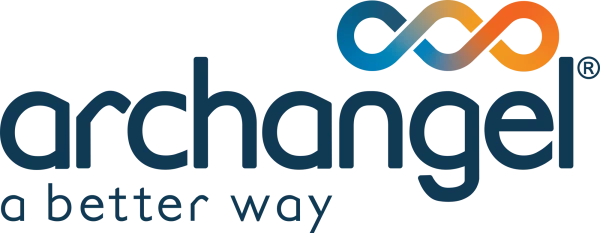11th November 2024
A call to action for proactive prevention in the UK.
Falls among the elderly are a significant issue in the UK, with wide-ranging implications for health, social care, and housing sectors. These incidents not only result in physical injuries but also impose considerable financial and emotional burdens on individuals and society. As the population ages, the importance of preventing falls and mitigating their impacts grows ever more critical. Despite advancements in technology, there remains an urgent need to shift from reactive solutions to more proactive and preventive measures. This blog explores the potential of fall prevention technologies and calls on UK policymakers and care professionals to act decisively in reducing the societal impact of falls.
The economic and social impact of falls.
Falls are a leading cause of injury-related hospital admissions among older adults in the UK. Approximately one in three people over the age of 65 experiences a fall each year, resulting in significant healthcare costs. The NHS spends around £2.3 billion annually on falls-related healthcare and social care, encompassing a wide range of services and interventions:
- Emergency care and hospital admissions. A substantial portion of the costs comes from emergency services. This includes ambulance call-outs, accident and emergency (A&E) department visits, and subsequent hospital admissions. In many cases, falls result in fractures, head injuries, or other serious conditions that require immediate and extensive medical attention. For example, hip fractures, a common consequence of falls, often necessitate surgery and prolonged hospital stays, with conservative average costs estimated at around £30,000 per patient per year.
- Long-term rehabilitation. Beyond the immediate treatment, many fall-related injuries require long-term rehabilitation. This includes physiotherapy, occupational therapy, and other specialised services aimed at helping patients regain mobility and independence. These rehabilitation services can be both resource-intensive and costly, especially for older adults who may have other underlying health conditions.
- Social care and home support. Falls often lead to a need for increased social care services, including home care and support for daily living activities. This can involve the installation of assistive devices, modifications to the home environment (such as handrails and ramps), and the provision of personal care. The financial burden of these services is often shared between the NHS, local authorities, and families, adding to the overall cost of care.
- Residential and nursing Care. In more severe cases, falls can result in the need for long-term residential or nursing care. The cost of placing an elderly individual in a care home can be significant, with fees often exceeding £1,000 per week. For those requiring specialised nursing care, the costs can be even higher, putting immense financial pressure on families and public services.
Social consequences - beyond financial costs.
The consequences of falls are not solely financial. For many elderly individuals, a fall can result in a loss of independence, an increased fear of falling, and social isolation. These outcomes often lead to a decline in both mental and physical health, increasing the likelihood of depression and anxiety. Family caregivers also face significant emotional and physical challenges, which can lead to burnout and a reduced quality of life.
The promise of technology - proactive vs. reactive solutions.
While various technologies have been developed to address fall prevention, there is a critical distinction between reactive and proactive solutions. Proactive systems are designed not only to respond to falls but to anticipate and prevent them.
Proactive sensor systems.
Proactive systems use a combination of sensors and artificial intelligence to monitor an individual's daily activities and detect subtle changes that may indicate an increased risk of falling. These systems can include:
- Motion Sensors: Motion sensors can monitor movement patterns throughout the home. For example, a noticeable change in walking speed or frequency of activity such as increased visits to the bathroom, a sudden lack of movement during times when activity is expected (e.g., not getting out of bed in the morning), can signal a decline in mobility or balance, suggesting a higher fall risk.
- Pressure Sensors: Embedded in flooring or beds, these sensors can detect pressure changes. For instance preparing to leave the bed, can be used to prompt a check-in from caregivers.
- Wearable Sensors: Beyond simple reactive fall detection, wearable devices can monitor vital signs such as body temperature, breathing rate, heart rate and blood pressure, providing additional data that can be used to assess an individual's health and fall risk.
- Hydration Sensors:Regular hydration is another factor in preventing falls. Environmental sensors used by housing teams to monitor for Legionnaires disease in the taps can also provide useful insights into the regular use of taps for hydration habits. Lack of hydration can prompt a visit from a caregiver.
Case study example.
Consider a scenario in a home equipped with a comprehensive sensor system. The system notices that an elderly resident has been getting up more frequently during the night but moves more slowly and unsteadily than usual. The data analytics platform flags this pattern as a potential fall risk. In response, the care team could implement several interventions:
- Personalised Physiotherapy - The resident might be offered additional physiotherapy sessions to improve balance and strength.
- Medication Review - The care team could review the resident's medications to check for side effects like dizziness or drowsiness.
- Environmental Adjustments - Adjustments might be made in the resident's room, such as adding non-slip mats or improving lighting.
These preventive actions could significantly reduce the likelihood of a fall occurring, thereby avoiding the associated costs and negative health outcomes.
Other technological interventions.
- Audio Alerts - Smart home systems can be integrated with audio alerts to remind residents to take their medications, hydrate, or avoid certain risky behaviours. For example, an alert might advise someone of icy weather conditions and to take precautions when venturing outside their home.
- Smart Lighting - Smart lighting systems can be set to gradually brighten when someone is getting up during the hours of darkness, reducing the risk of falls in dim light. Low cost options such as motion-activated lights can illuminate pathways during the night, helping prevent trips and falls.
- Automated Emergency Response Systems - These systems can automatically call for help if a fall is detected and the person is unable to respond. This rapid response can be crucial in minimizing the severity of injuries.
- Integrated Platforms -many of these systems are available but operate in isolation from each other, and this can reduce the efficacy. An integrated monitoring platform like Archangel will ensure that all of the systems are connected and remain live and thus caregivers, and families are assured that their loved ones are constantly monitored.
The call to action. A collective responsibility.
Acknowledging the potential of these technologies is not enough; we must act to implement them. We call on UK policymakers, healthcare providers, and those involved in elder and home care to prioritise the widespread adoption of proactive fall prevention technologies. The current reliance on reactive measures is insufficient. We must invest in solutions that prevent falls, not just respond to them.
To our policymakers and decision-makers: It is imperative to allocate funding and create policies that support the integration of advanced fall prevention technologies in homes, care facilities, and public spaces. Consider the long-term savings and improved quality of life that proactive measures can provide. The cost of inaction is too high, both financially and socially.
To healthcare and social care professionals: Embrace innovative solutions that go beyond traditional caregiving methods. Educate families and caregivers about the benefits of proactive technologies and advocate for their use. Your support and leadership are crucial in driving the adoption of these life-saving tools.
To the broader community: Recognise the importance of proactive care in reducing the incidence and impact of falls. Advocate for the elderly in your community, ensuring they have access to the best care and preventive measures available.
Conclusion. A unified effort for a safer future.
The issue of falls among the elderly is a complex challenge that requires a unified and proactive response. The economic and social costs are enormous, but the advancement of fall prevention technologies offers a viable path forward. By embracing these technologies and prioritising proactive measures, we can significantly reduce the incidence of falls, alleviate financial burdens, and improve the quality of life for older adults.
This is a call to action for everyone involved: let’s work together to create a safer, more supportive environment for our aging population. The time to act is now, before another preventable fall occurs.
Blog by: Tom Morton, Archangel CEO and Founder
Discover more about our falls solution on our Integrated Care Solutions page.
Sign up and keep up-to-date.
We'd love to keep you in the loop! Receive our latest news, events, insights, and blogs delivered straight to your inbox.

